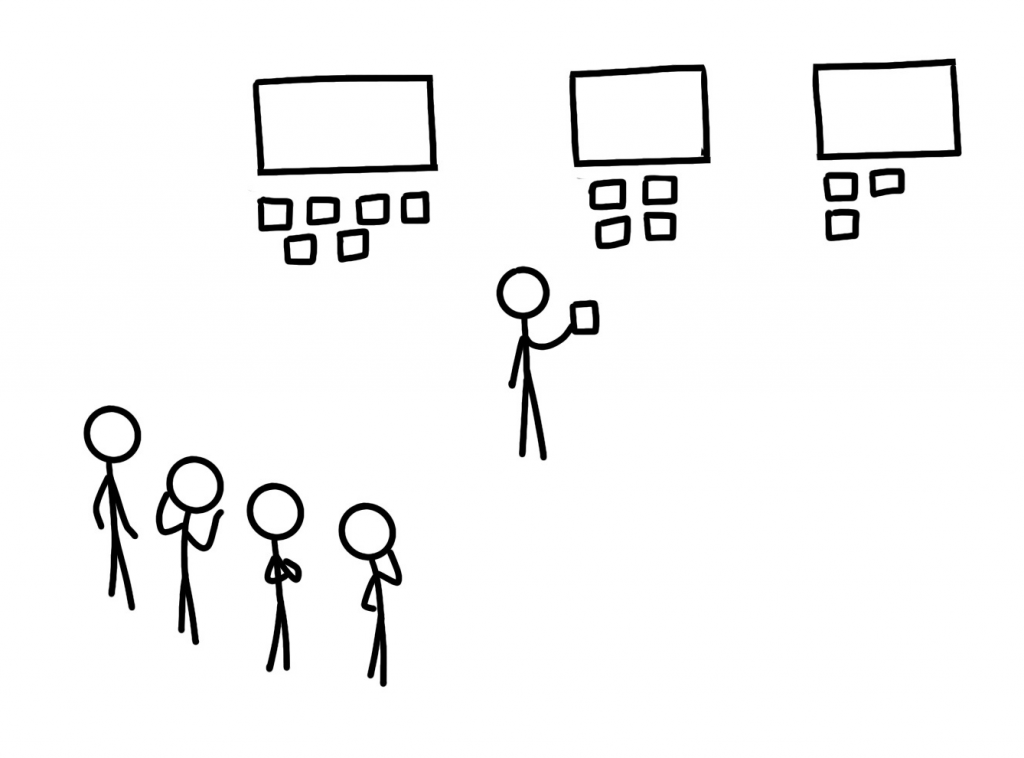I couldn’t tell you if a tree falling in the forest makes a sound when no-one is around, but a research report certainly doesn’t. It’s very common to hear researchers complain that no-one is paying attention to their findings.
This is a very bad situation for a new research team – what is the point of running studies if no-one is acting on the findings?
It’s easy (and fun!) to complain about people ignoring research – but to make a real difference, effort is needed to make using evidence from research easy for our colleagues. In this blog post we look at three techniques to get people to take notice of research findings, and increase the impact of our research studies.
Run studies people care about
User research uncovers information that makes decision making easier. It’s surprising if no-one is paying attention to that information. Are your studies actually answering questions related to the team’s priorities?
It’s designers and product managers, who typically make product decisions, not researchers. Because of this, it should be designers and product managers who are informing research objectives. They know what decisions are coming up that they have to make, and they can make an informed decision.
When researchers plan and run studies unilaterally, they can go off and run studies that they find interesting, but which might not be relevant for upcoming product decisions. This isn’t to say that researchers can’t have good ideas for studies – by providing an unbiased outsider’s view they can identify some of the core assumptions being made by product and design, and run studies to explore them. However a researcher should also check there is the opportunity to take action based on the findings, and gather some support for exploring these assumptions, before committing time to running these studies.
The solution is to work closely with our product and design friends, always set objectives collaboratively, and ask teams “what are you going to do with this information” before starting studies. A kick-off meeting, using the kick-off template can help put some structure to those conversations.
Move beyond research reports
It’s a well known user research trope that user research reports get presented and then filed away in a drawer to be forgotten evermore. This is a shame, as forgotten findings have no impact on product decisions.
This happens because research reports are an easy way for the researcher to ‘store’ knowledge. But they are not always an easy way to consume knowledge, and many findings, and potential opportunities will be missed when research findings are delivered in one big report.
To fix this, look to other ways of sharing findings – or moving beyond sharing findings at all, and make generating findings collaborative. In Building User Research Teams I share a variety of ways that research can be made more collaborative throughout the whole research process. One that I think works well as a team’s maturity with research grows is to analyse raw data together.

When the whole team observes a user research session, ask them to make their own observations about user behaviour on post-its. After the session, everyone can share their post-its and stick them on a wall, then collectively group them, and decide “what does this mean”.
Although these collaborative methods are less efficient than analysing and creating a research report independently, they can lead to a better understanding of the outcome of the study from our design and product colleagues. This can lead to research having a much larger impact.
Find the second audience for your studies.
Some research findings are useful beyond this immediate study – for example, when exploring user behaviour in the real world. However this second audience are unaware of the study, or it’s findings, and so won’t be able to act upon what you’ve learned.
By helping this second audience understand what research is occurring, and what the outcome is, it creates new opportunities for studies to have an impact.
Openness is extremely important about this. Taking every opportunity to be open about what studies are being run, and what they are learning. This can include maintaining up-to-date team intranet sites, sticking posters on walls, presenting at show & tells, being active on slack, and talking about research endlessly.
Atomising research can also enable findings from previous studies to be reused. Removing evergreen findings from the context of a report, and including them in a research repository or queryable database will allow them to be discovered in the future by researchers looking at the same topic. Dovetail is one tool that can do this, although you might also want to explore building something bespoke to your own team in Airtable tailored for your team’s needs
Getting people to care about research
As a researcher becomes more senior, ‘soft skills’ become a lot more important – not just being able to run reliable research studies, but build the relationships required to make sure that people care about user research.
The techniques above are a starting point. I’ve written further about the multiplying factor that collaboration can have for researchers in my book Building User Research Teams. I’d also love to hear your recommendations, do get in touch on twitter.
Leave a Reply